A Cheerier Vision of the Depression Years, in Hyperbright Postcards of Recreation Spots
Although we now associate the "look" of the Depression with the stark black-and-white photographs of Dorothea Lange or Walker Evans, for people who lived then, the superbright linen postcard was a staple of the visual landscape. Between 1931 and 1950, many imitators followed Chicago's Curt Teich & Company, the inventor of the printing process that made the linen postcard possible, into the marketplace. American souvenir shops and drugstores filled with racks of the intensely colored cardstock rectangles, often sold for a penny apiece.
Teich alone, writes historian Jeffrey L. Meikle in his new illustrated history of the linen card, "published about 45,000 unique individual views of the United States" using this format. (Disclosure: Meikle was a professor in my graduate department and was on my dissertation committee.) If you factor in the postcards created by Teich's competitors, the number of American scenes reproduced on linen cards during these decades might come to 100,000.
Teich and other companies commissioned photographers across the country to capture the images that would serve as the base for an individual card. The process started with a black-and-white photograph, which would be retouched, then printed, using offset lithography, on card stock. The "linen" postcards were not actually made from fabric but rather embossed stock, roughened in a process meant to maximize the brightness of the colored ink. The lines the embossing left behind suggested canvas, prompting the shorthand.
Linen cards, Meikle writes, "portrayed the American scene as shimmering with promise during the uncertain times of the Great Depression and World War II." The section of his book devoted to postcards of recreation shows this sunny side quite clearly, dwelling on scenes of good times—a lakeside sunset in Cleveland; a day spent on the Atlantic City boardwalk; a nighttime view of Old Orchard Beach's Noah's Ark attraction from the outside—all heightened into brightly saturated surreality.
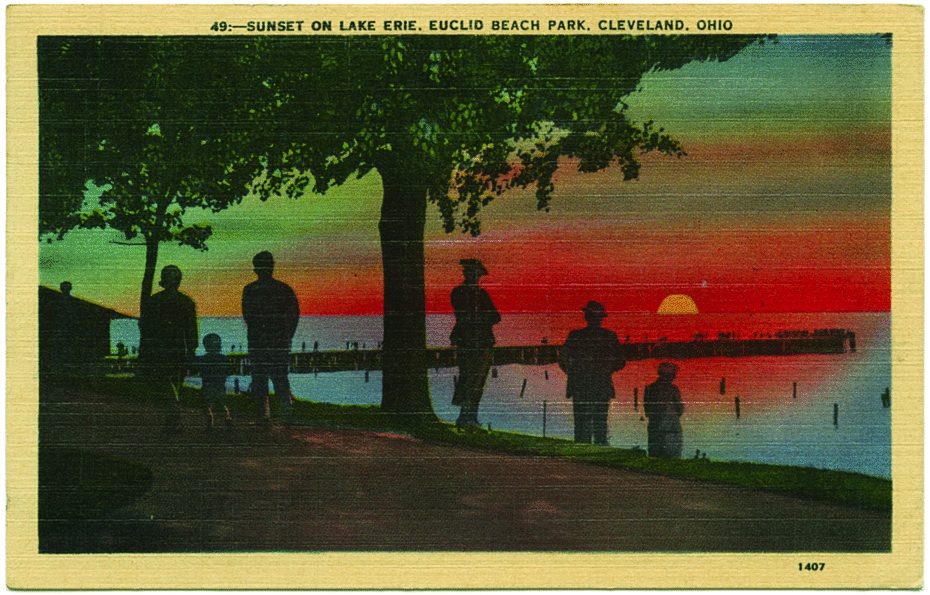
Jeffrey L. Meikle
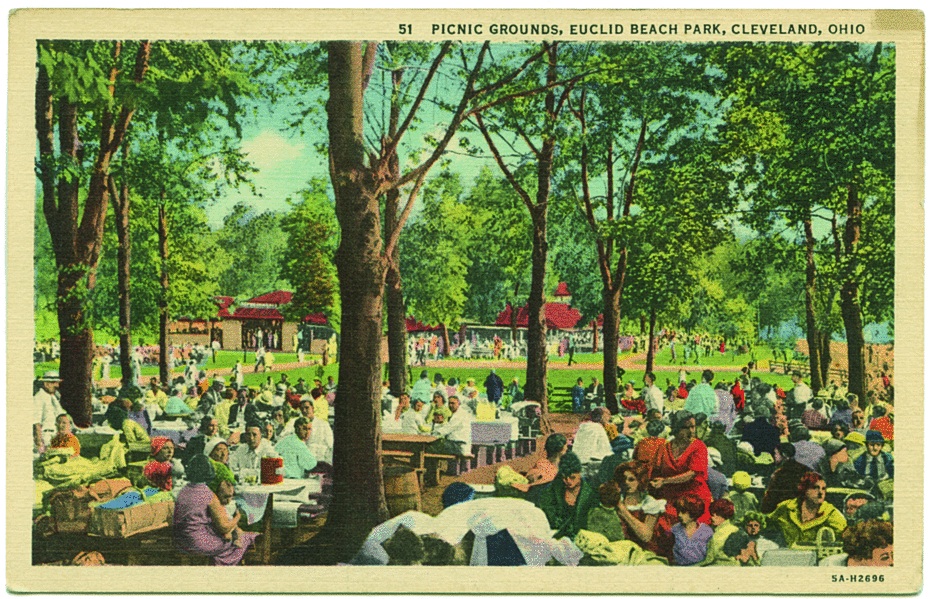
Jeffrey L. Meikle
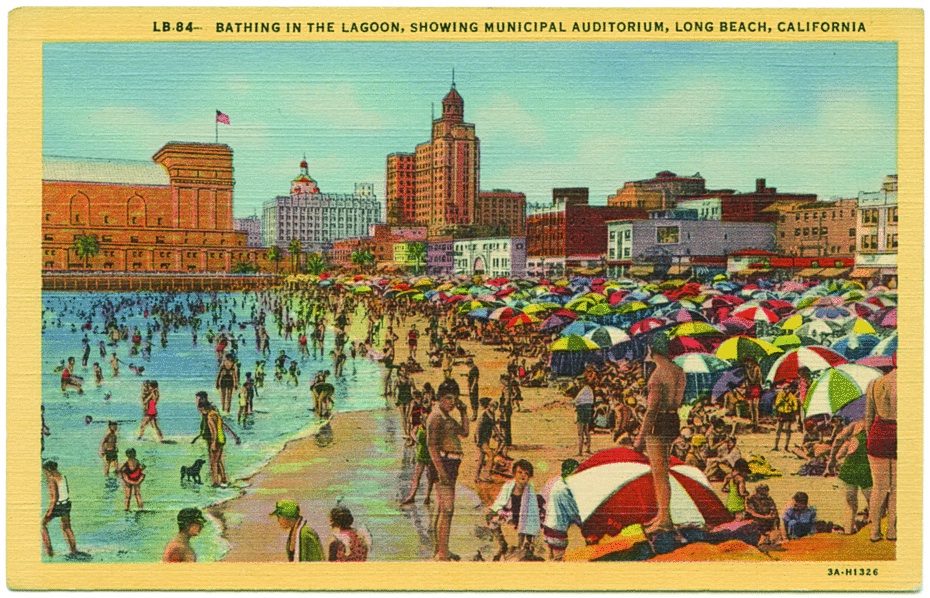
Jeffrey L. Meikle
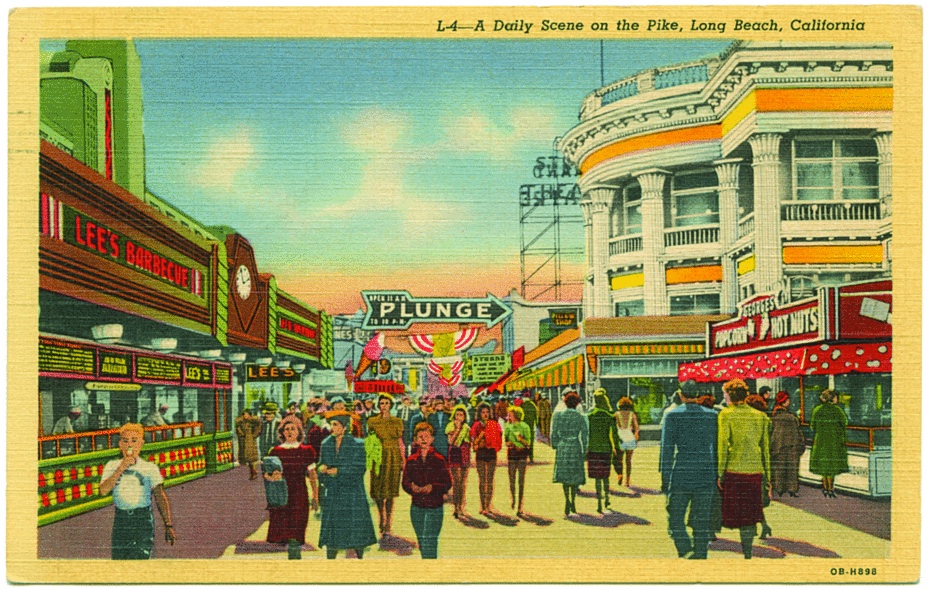
Jeffrey L. Meikle
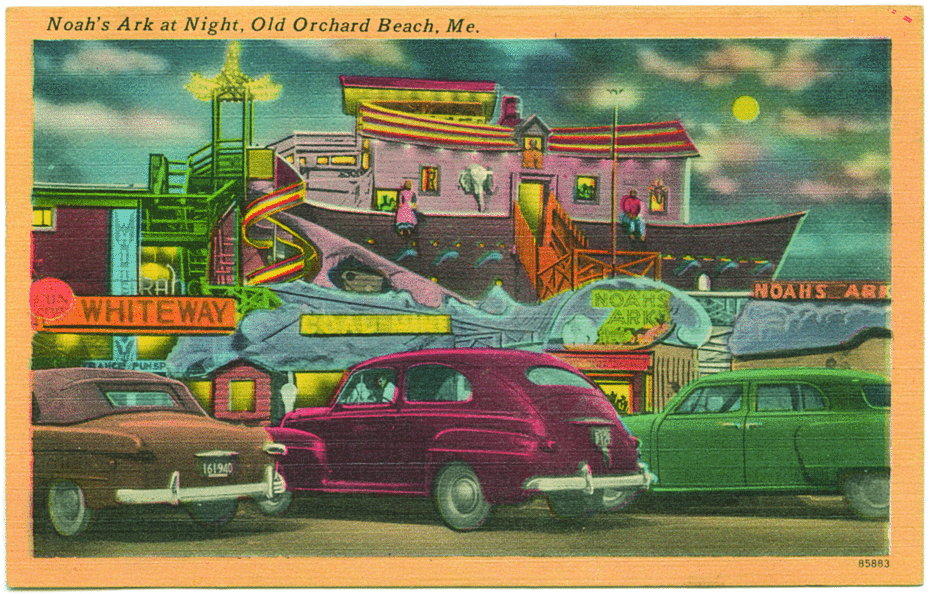
Jeffrey L. Meikle
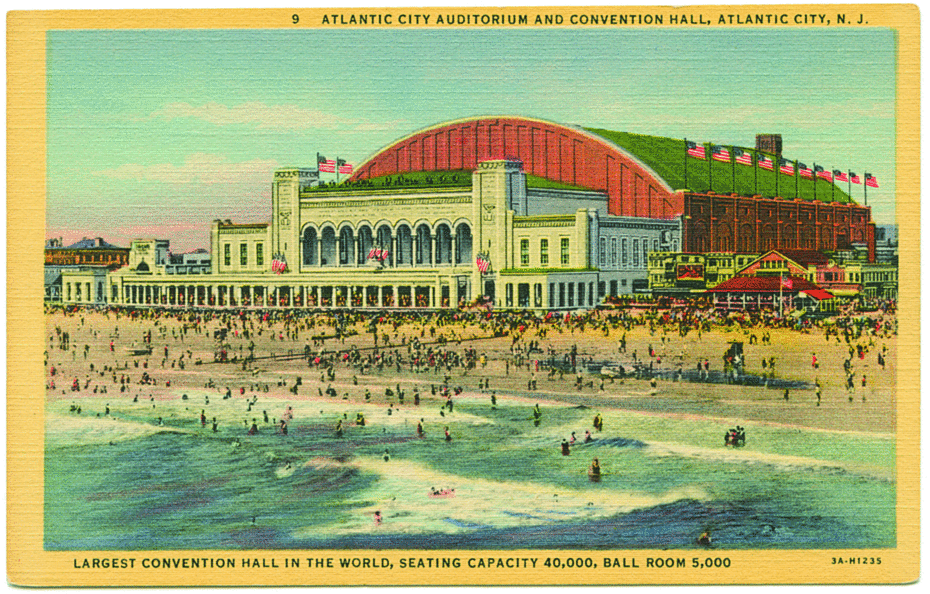
Jeffrey L. Meikle
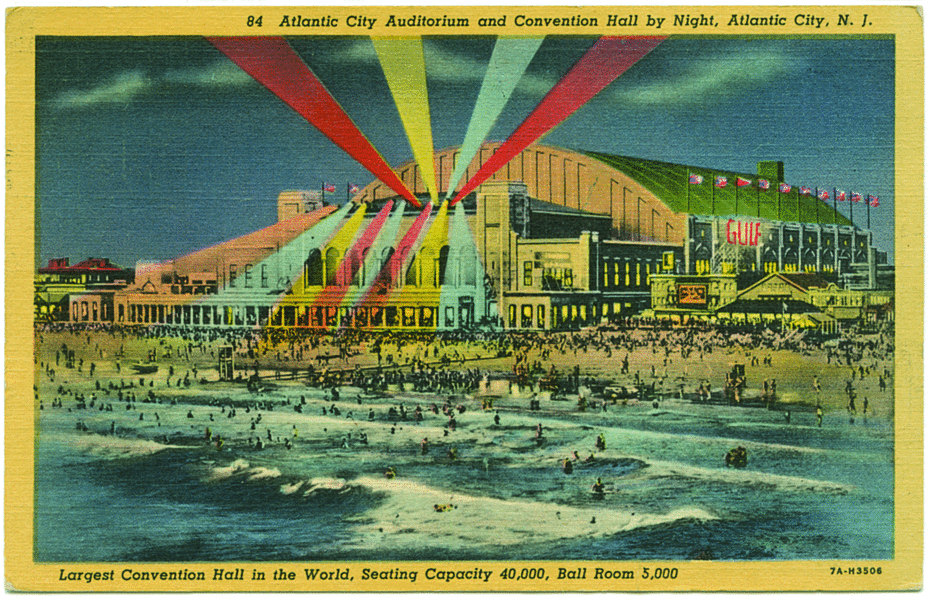
Jeffrey L. Meikle
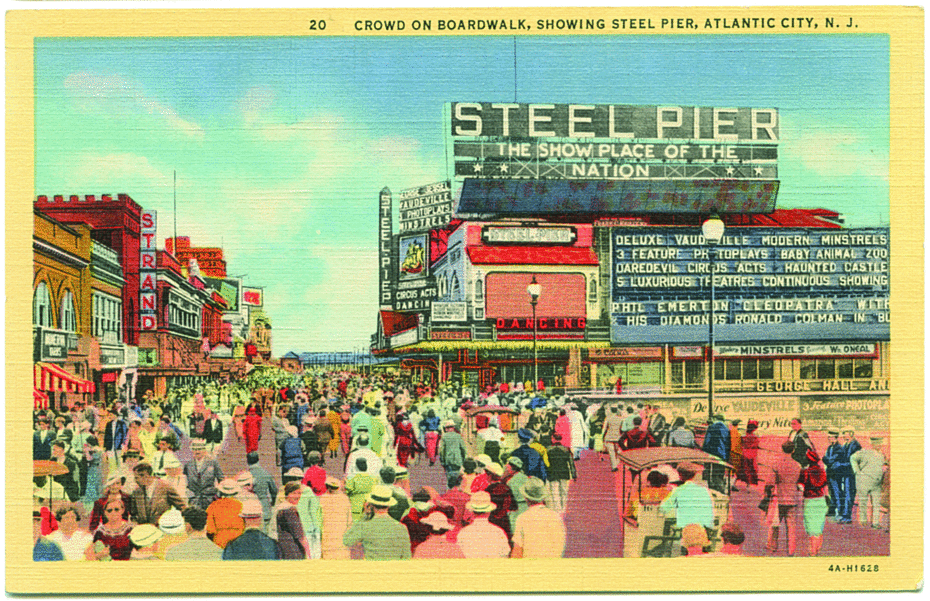
Jeffrey L. Meikle
